Dining has its dangers. And I don’t mean indigestion or choking on a bone. I’m talking hazards for the local seed-eating birds—the doves, quail, sparrows, juncos, and finches that check out the seeds that I scatter on the ground each morning.
Winter’s icy chill has descended on this part of Arizona, and recent snow has frozen into a crunchy crust. Little soil is exposed, and even the shrubs continue to bear heavy blobs of snow. These are lean times for seed-eating birds; there is no dietary margin for error. Find enough to eat or die.
The birds flock into my yard, a veritable winter cornucopia of mixed bird seed, suet, peanut butter, and nectar (though it’s challenging to keep the hummingbird food thawed). For most, it’s scramble competition for food, and the birds are have to be efficient to get their share. For a few, notably the brash Western Scrub-Jays and scimitar-billed Crissal Thrashers, a little bullying goes a long way.
But even as the seed-eaters concentrate on finding and consuming as many little bits of energy as they can, they cannot relax their guard. Their furious activity makes their mixed flock highly visible for a long way, and there are predators that haunt these acres.
Fortunately, a group of many birds means many eyes. Suddenly there is a sharp alarm call, and the birds scatter in every direction, many disappearing into protective thickets of oak or manzanita, while others take off in beelines for distant shelter. A winged missile strafes the thickets, misses, and settles into a pinyon. It’s an adult Cooper’s Hawk. It gazes intently into the shrubs for signs of an over-exposed feathered morsel. If it sees movement, it likely will dive into the thicket, even forcing its way through on foot. This is a fierce bird, not easily deterred from its mission.
Yet most attacks end in failure. It’s not easy to be a predator, no matter how fierce or physically fit you may be. Your food does not sit passively for you to collect it. If seedeaters have a hard time finding food when their diet is plant seeds, then imagine the challenges of capturing food that absolutely does not want to become a meal. Every attack is energetically costly. To kick in the jets for that extra burst of speed is to burn half-a-sparrow’s worth of fuel. To dive into a thicket of plants armed with sharp branches risks injury, and an injured solitary predator operates with a handicap that can hasten starvation. It may be more satisfying to dine on warm breast of titmouse or thigh of thrush than on cold, hard seed of sunflower, but it’s a riskier strategy.
In addition, the accipiter has no friends (not that I think it worries about it). One chilly morning, an immature Cooper ’s Hawk, not yet decked out in the fine attire of an adult, landed in the yard in a sunny spot, a place to bask in the warmth of early solar rays. Comfort was its concern, not food, and all the neighborhood critters seemed to know it. A Rock Squirrel not 20 feet away took its own solar warm-up, and a Cliff Chipmunk scooted under the hawk without eliciting a quiver of interest. A jay, omnivore himself and no innocent to predation, did take interest and mobbed the hawk, screaming bloody murder and strafing the hawk in a blur of blue. To the hawk, this was mere nuisance, a minor annoyance. A dozen Bushtits foraged in scrub oak, lisping sweetly and without fear of the predator a few yards away. 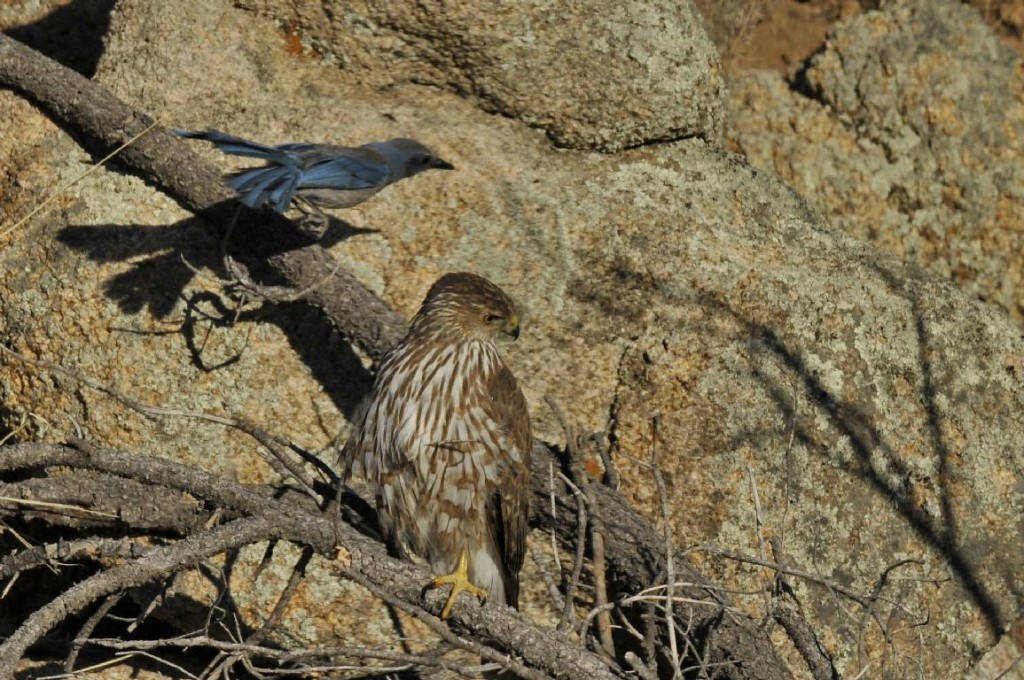 A basking hawk is no threat, but when hunger gnaws at its bony breast, the raptor becomes a killing machine that commands the utmost respect. (Boy, it’s impossible to describe this without becoming anthropomorphic, but I trust you’ll forgive the slip into projecting emotions onto these birds; look one in the eye when it’s hungry, and you’ll do the same).
A basking hawk is no threat, but when hunger gnaws at its bony breast, the raptor becomes a killing machine that commands the utmost respect. (Boy, it’s impossible to describe this without becoming anthropomorphic, but I trust you’ll forgive the slip into projecting emotions onto these birds; look one in the eye when it’s hungry, and you’ll do the same).
Though successful attacks can be few and far between, they obviously do occur, and to witness them is to share in the rare but vital drama of natural selection in action. We omnivorous humans eat all over the food web, but sometimes we are at the highest trophic level, and the hunter instinct still stirs us at times. To the hawk, it’s always up there at the top of the food pyramid, energetically that lonely pinnacle, giving it figurative as well as literal right to look down on its prey.
Unable to be inside unless I am near a window, I have seen my share of successful attacks. I’ve watched Cooper’s Hawks take doves, quail, a flicker, and a young robin, the latter not long out of the nest and experientially naïve. The robin was in a tall pine outside my study window, maybe 25 feet away. The hawk appeared out of nowhere, and the robin panicked, flying blindly into the side of the house, knocking it to the deck for a moment. It collected its wits a bit and hopped up on the window sill a few feet from me. It huddled there even as the hawk landed on the metal fence at the edge of the high deck. The hawk stared. There was its intended meal, and right behind the prey was a huge, hairy human staring right back. A minute passed, then another. Stalemate?
But no, the hawk would not be deterred from young Turdus. Suddenly it crouched slightly, then shot to the window sill, grabbing the robin with one foot, giving me the evil eye for an instant (or so I believed), and dashing off to a favorite pine snag, where its talons squeezed the last life out of the fledgling. Then the plucky bird began (what else?) plucking its prey.
The Cooper’s Hawk seems to have adapted well to living in proximity to humans. Every neighborhood with decent cover and good populations of small birds will have one. These raptors are common in Tucson, where the reliable food supply allows them to have larger clutches, more energy for more eggs. Yet urban or suburban living has its own dangers, and in some cases, those larger populations may actually be what biologists call “sinks”—areas where higher mortality actually can exceed production of young. Those country birds with their smaller clutches might actually be providing the immigrants that keep the city populations high. Without rural flight to the cities, the populations there might decline and disappear. This is something to keep in mind as we convert more and more open space to the built environment. The wildlife that we enjoy might be dependent on those pockets of wildness nearby, just as many of us are dependent spiritually on them.
Cooper’s Hawk? I don’t really care that Cooper may have been a good ornithologist, good enough to have an ornithological society named after him. “Cooper” doesn’t do this bird justice. Maybe Accipiter terminator or Accipiter assassini. I’m just glad that I don’t have to keep looking over my shoulder as I eat! With lions, hyenas, and leopards on the prowl, my distant ancestors would have had to have been as cautious as are the towhees and goldfinches in my yard today. It’s easy to empathize.

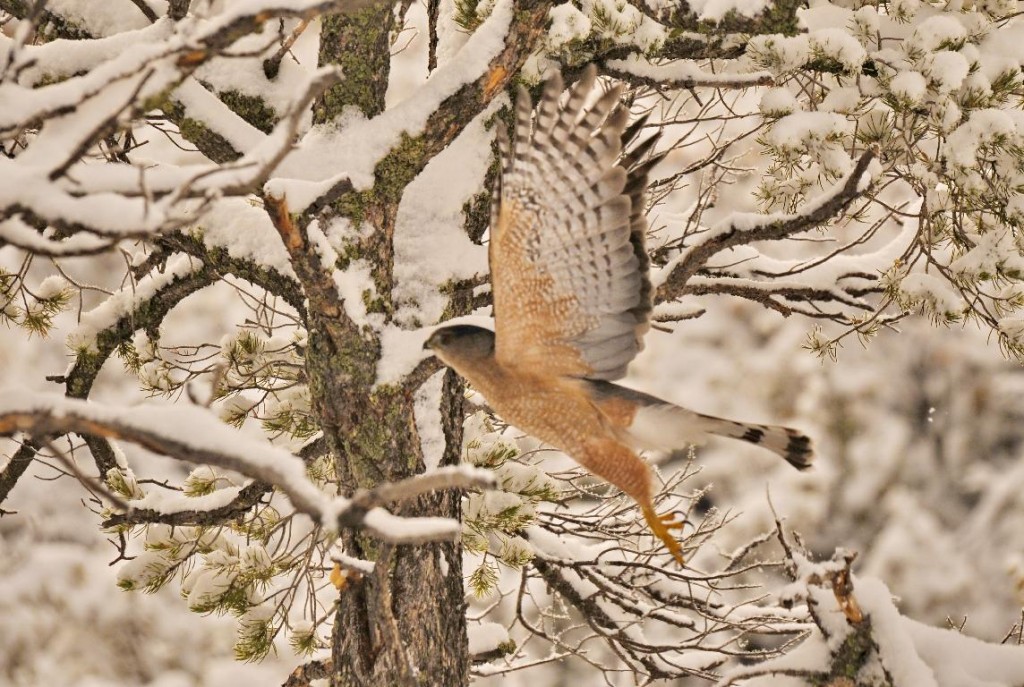
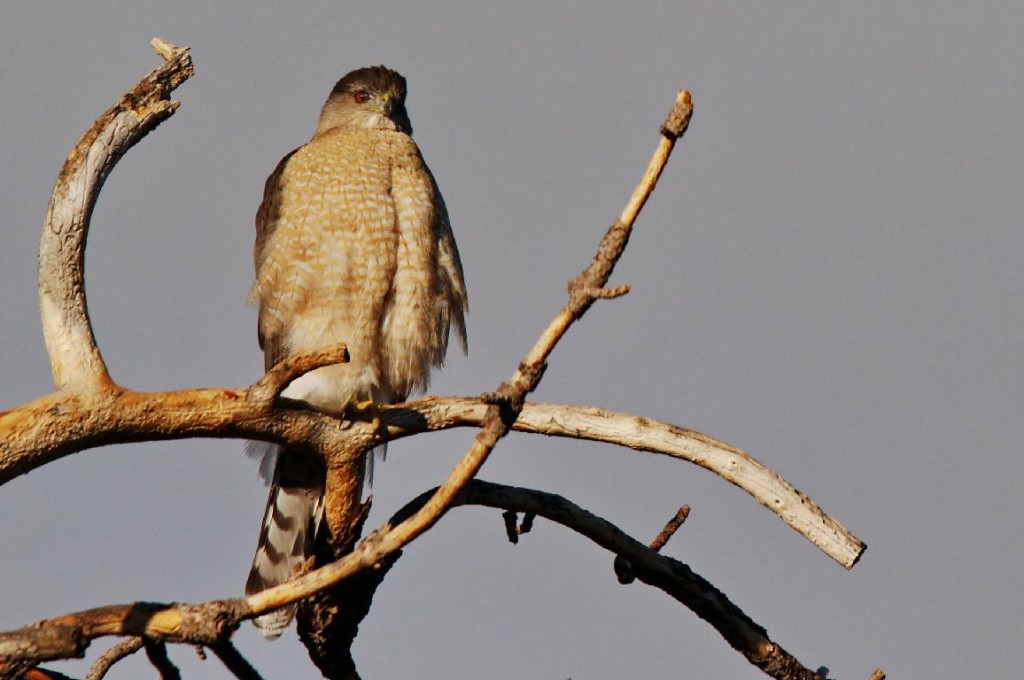
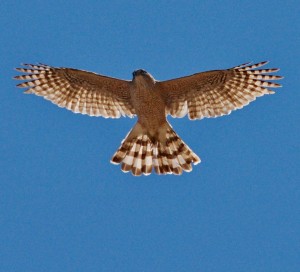
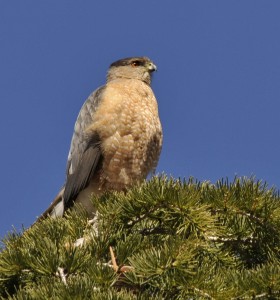
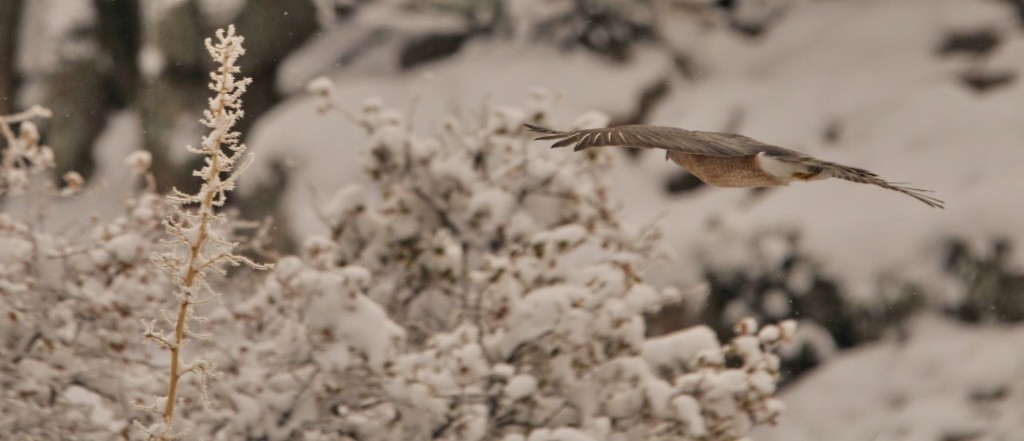
Beautiful essay and wonderful photos! Thanks so much. Gail
Wonderfully Walt. Splendid story and images. I can hear your voice as I read and imagine your binoculars or camera ready for action. Keep them coming. Season’s peace-Liz
Thanks, Walt! Wonderful commentary and wonderful photos, as always.
Beautiful, Walt! Thanks for sharing.
Great photo story! It’s great that you’re out there chronicling these things that are happening around us just out of sight. Thanks for bringing them to us.
This is great Walt! Your post has wonderful narration and is an inspiration for a beginning blogger!
Wow. It must have been amazing witnessing the scene of the hawk and robin unfold right outside your window…a virtual natural history tv program. I enjoyed the combination of information and descriptive, eloquent and story-like writing. Thanks!
Thanks, Walt! Makes me miss Prescott– where there are more birds to watch than just starlings and crows in the winter! Great photos and a vivid narrative…
I’m delighted to read your work again, Walt! Thank you for sharing your insights with us.
Thanks for the pictures and essay! Woody
Elliott forwaarded it to me. H. Gray
Why travel to the Serengeti to witness the struggles between predator and prey when it’s right in one’s front yard. Great article.
What a delight to hear from you Walt and with such a lovely essay illustrated with exceptional photos. Thanks so much. Hope you have a wonderful Christmas. you are missed here in California!!
I love the way you weave your story with the natural history of the bird. Thanks for giving me the opportunity to see life through your eyes.
Extremely and beautifully well written and the photos, as usual, are fantastic. It was a delight to read. Thanks for sharing it.
What a wonderful story, Walt. Your words create images that complement the photographs. Thank you.
Beautifully written Walt, and stunning photography. Christoph tells me that you are also a painter – any forthcoming paintings of this beautiful hawk ?
Abraços from Brazil !! Kitty
Wonderful photos. Great to have your comments adding to my enjoyment of hawks and songbirds in our backyard. Words matter. Elaine
Yes, words matter! As I wrote in the Interpreting Nature page of the website, “For me, words can be magic. Well-crafted, they can stimulate and promote in others what I call “informed imagination.” See my first blog entry (“I am a Naturalist”) for thoughts on being a naturalist; most of my blog entries will be designed to interpret, to teach, to celebrate, and, once in awhile, to inspire.” Sorry that I didn’t change what are now internal quotes to singles quote marks. Punctuation matters, too.
Oh, Walt–you’ve done it again! What fabulous photos, and thanks so much for helping the rest of us see what’s happening in our neighborhoods. (Of course, your photos and words make me miss that extra special Prescott neighborhood…)
Walt,
Great story and photos! Thanks for the posting. You are an inspiration. I look forward to more interactions in the future.
Walt:
You haven’t lost your fascinating touch in bringing observations about birds to life. Super! Thank you for sharing your thoughts and photos with us. Merry Christmas to you and the young men in your life, Reed and Quill. Jules and Harding
Very nice work Walt,
The essay is like a breath of fresh air and I can only dream about capturing images that come close to yours’. Thank-you for sharing this and all the best for the holiday season!!
Super images, both words and photos!
Amazing, really made my morning. Thanks Walt.
Walt: Thank you very much for sending this essay on the Cooper’s Hawk. Please put me on your mailing list. Jo Ellen and I had the pleasure for the last two summers of following the development of two clutches of five Cooper’s Hawk young in each case. These were both in our neighborhood in Davis, CA. We’re quite confident that the parents were the same for each clutch. Once fledged, the young stayed close to each other near the nest tree (different location each summer) and made begging calls much of the time. Both clutches were raised to the point of independence. The parents were seldom seen, but must have been kept very busy hunting for five hungry juveniles, and when they delivered prey they dropped it and spent no time with the ravenous young. A week ago, a friend saw a Great-horned Owl in last summer’s nest tree. Then an adult Cooper’s Hawk appeared and flew like a rocket at the owl, hitting it straight on right in the breast. No feathers flew, and the owl was not knocked off its perch, and it didn’t fly away. However, the message was probably clear: “Get out of my nest tree and territory!”
I loved your essay, and look forward to seeing more of your blog. Gene
Gene.
Good to hear from you. Glad you enjoyed the essay. Subscribe to the blog (it’s easy), and you’ll get notices of new postings.
Loved this, Walt! And you reminded me of the summer day a hawk of some sort took a Steller’s jay from a pine branch right next to where we were eating lunch on our deck. Chilling.
Great words and photos Walt! Miss you, and keep sharing!
Between the photos and the essay, I gulped this down! Need to go back and savor it now.
What a magnificent raptor..and you described it all as eloquent as you’ve ever been. We had a pair nesting in our neighborhood in San leandro and it was fascinating to watch them bring all sorts of critters from a nearby lake, to feed the chicks. They return each year.
Thanks Walt.
All the tension of a good suspense thriller. As I read, I contemplated the position of both the hungry raptor and its defenseless prey. Thank you for a brief snapshot of your world. By the way, as others have stated much better than I, the photos were magnificent. Thanks……
I am sorry I didn’t comment when I read this earlier. I feel like I am there with you when you describe the birds and actions. I am stuck at home with all this snow in Marysville and in the NW of WA. I hopw it will go away soon so I can go to work.
Thanks, Dianne. I’ll keep writing!